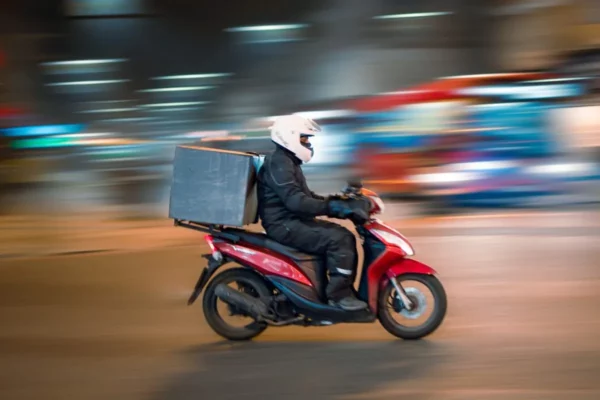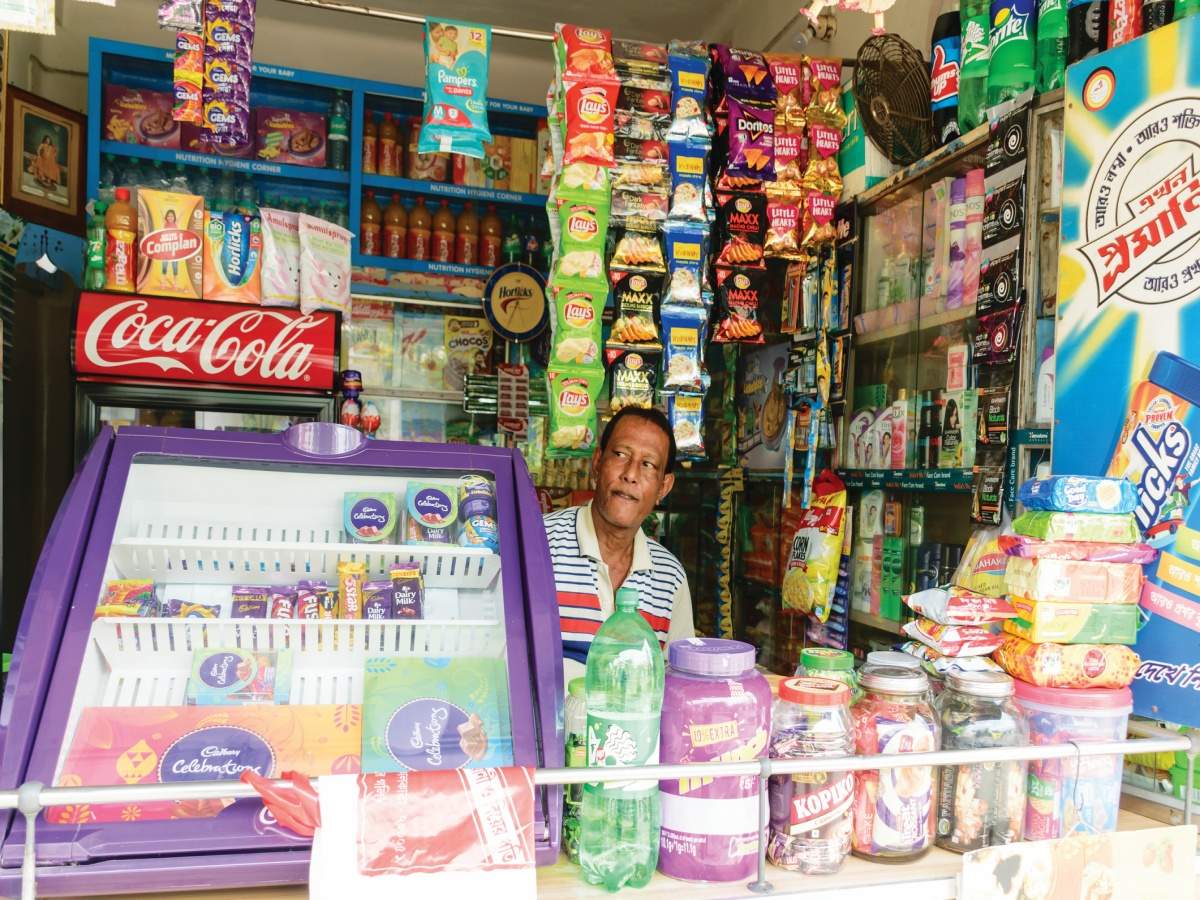Reliance To Enter Into Quick Commerce Segment: Why Are Companies Running Quick In Setting Their Feet On The Quick Commerce Delivery Industry?

Chairman of Reliance Industries, Mukesh Ambani, has built his energy firm into a massive retail conglomerate. With its massive retail operation, which leverages both conventional and digital Kirana industry, Reliance has enticed customers with offerings ranging from luxury items, phones, entertainment, data, and now home appliances. However, customers who are demanding and lack patience, particularly millennials and Gen Z, may abandon Reliance’s e-commerce fold. So, Reliance is now bringing back an old concept that it abandoned a year ago.
Known for using cunning marketing techniques to upend the consumer market, Reliance Industries is getting ready to compete with companies like Blinkit, BigBasket, Instamart, and Zepto in India’s fast-growing quick commerce business. According to sources, Reliance Retail’s JioMart might start the service as early as next month.
JioMart plans to start delivering groceries in at least seven or eight cities before expanding the service to more than 1,000 locations. Previously, the company used JioMart Express to provide delivery services within 90 minutes. But it was closed down almost a year ago. The Mumbai-based company, JioMart Express, started the service in Navi Mumbai with the intention of expanding it to around 200 cities. Deliveries under 30 minutes are the current goal.
JioMart now provides scheduled and next-day delivery options to consumers. JioMart will eventually offer non-grocery products through quick commerce, allowing it to efficiently tap into Reliance Retail’s over 18,000 outlets across categories and formats. According to reports, JioMart is focusing on hyperlocal omni-channel presence and will continue to service customers from thousands of outlets around the country.
Why suddenly does everyone think about quick commerce?
“Is quick delivery even a thing?” Just two years ago, this question was pertinent. Many people did not take quick commerce or ultra-fast delivery seriously. Some even claimed that buyers do not want items delivered in 10-15 minutes. When quick commerce (or Q-commerce) took shape in India during the COVID-19 pandemic, a huge portion of the industry dismissed it. Their reasoning was that Indian customers would not pay convenience fees, no matter what. Some even stated that customers would gladly wait a few hours or even a day if it meant receiving their items for free.
Cut to today. Leading fast-moving consumer goods (FMCG) companies, one after the other, claim in their 2023-24 financial reports that Q-commerce is no longer only their fastest expanding channel but the driving force behind their whole e-commerce operation. So much so that in the two years after the industry took shape, Q-commerce has already contributed up to 35% of overall e-commerce sales for major FMCG businesses in FY 24. The amount being contributed has practically doubled in the last year.
The move has prompted Walmart-backed Flipkart to prepare for a quick commerce entry. Quick commerce companies like Zepto, Swiggy, Blinkit, and BB Now are eager to expand into new areas. Delhivery cofounder and CEO Sahil Barua recently stated that a sub-segment of quick commerce, including two—or four-hour delivery, might grow, with huge e-commerce marketplaces such as Amazon and Flipkart participating.
Now, Quick commerce is becoming popular, particularly among millennials and Generation Z. Companies now do more than simply transport groceries. They’ll have anything from fans and T-shirts to jewellery and iPhones delivered to your house in no time.

Interestingly, quick commerce probably makes up for 5-6 % of what a household spends on groceries. For example, Blinkit contributes more to Zomato’s market cap than its food delivery biz, says a Goldman Sachs report. Blinkit, a major player in quick commerce, is currently worth around $13 billion. This is even higher than Zomato’s core meal delivery operation. This demonstrates how rapidly this sort of service is expanding. It is mainly popular in large cities but is also gaining traction in Vizag, Nagpur, Kochi, Jaipur, and Lucknow.
Earlier in the month, Zomato said it would increase the dark store network (warehouses from which items are sent to consumers) of its Quick commerce venture Blinkit from 526 in March 2024 to 1,000 in March 2025. It further stated that the expansion focus will be on the top eight cities, which include Bengaluru, Mumbai, and Hyderabad. Blinkit also wishes to offer new categories.
During the last year, Swiggy’s Instamart has witnessed significant growth in quick commerce in cities such as Jaipur and Kochi. “Given the variety of items, they are finding strong momentum in both metros and non-metros,” said Phani Kishan, CEO of Swiggy Instamart.
BigBasket’s chief buying and merchandising officer, Seshu Kumar Tirumala, stated, “In the past year, half of the new consumers that they have gained are all pure-play quick commerce customers, who frequently do not make scheduled purchases and wind up buying 4-15 times a month from their platform. FMCG executives first believed that Quick commerce would replace local kiranas in some areas as a mechanism for customers to make top-up purchases while people continued to buy at supermarkets and e-commerce sites on a monthly basis. On the contrary, an increasing number of consumers choose to buy everything through Quick commerce.
So, what changed after the pandemic, which helped the quick commerce industry attract the attention of customers?
Convenience fee- The new norm.
Santosh Desai, a social commentator and brand expert, stated that for many consumers, particularly in urban India, the ease of ordering and receiving delivery when needed is worth the tiny cost. He emphasised that it has eliminated the inconveniences and costs connected with pre-planning purchases, going to the store, and paying for transit and parking. “Consumers have embraced Quick commerce convenience fees in their everyday lives, as they have numerous other modern levies that were not present previously. They are discovering value in supermarket purchases in this manner, and this might spread to other areas, such as clothes,” Desai predicts.
It’s no surprise that Zomato and Swiggy have begun collecting convenience fees for food delivery orders in select areas while experiencing no decrease in sales or order volume. Companies such as Adani Wilmar have even had repeat orders from the same customer on the same day using Quick Commerce. Angshu Mallick, managing director, stated that convenience fees have become a part of daily life in metropolitan India.
Time is money, and hence, customers are QUICK to save it.
“Time has become a premium for customers, particularly in urban pockets,” said Mayank Shah, vice president of prominent biscuit manufacturer Parle Products. “Quick commerce has fully debunked the myth that Indians will not pay convenience fees. The channel is also developing. “Previously, brands sold INR20-40 packs, but today they sell INR70-80 packs,” he explained.
The attachment from social media demands an app-based platform and avoiding calling to Kirana stores.
Executives also noted that consumers are more hooked on smartphones, chatting with family and friends rather than making phone calls. This is apparent in the increase in quick commerce purchasing, where customers prefer to pick items and place purchases via the app rather than calling their local Kirana.

Age is giving an edge to the quick commerce segment.
According to a Bernstein survey, 60% of respondents aged 18 to 25 preferred to shop via rapid commerce platforms, with 12% going to mom and pop stores, 10% utilising slotted delivery systems, and only 5% using modern retailers. Adoption of quick commerce decreased as one became older, with 44% in the 26-35 age group, 33% in the 36-45 area, and 30% in the above 45 age range. Older consumers depended the most heavily on mom and pop stores, with adoption rates of 27% for those over 45 and 20% for those aged 36 to 45.
How did top gear for quick commerce result in reverse gear for the local Kirana stores?
Sales at India’s neighbourhood grocery stores, which number over 12 million, fell sharply in the fourth quarter of 2023, despite quick-commerce businesses gaining market share for not just impulsive products but also huge packs of basics, according to consumer goods companies and experts. Packaged products manufacturers Marico, Dabur, Emami, and Parle, and industry experts, said that general trade, or kirana outlets, had slower growth, profitability, and liquidity issues in the previous quarter. However, e-commerce has grown rapidly, they noted.
Ayush Gupta, head of domestic market at consumer staples producer KRBL, which supplies India Gate rice, stated that they are amazed at how huge packs of staples have taken off in quick commerce, which is rising 100% QoQ for them. On the other hand, kirana food shop growth is around 10%, but on a greater scale, he noted. Adani Wilmar and LT Overseas said staples packs, even those weighing 5 kg or 10 kg, are seeing a strong increase in sales on quick-commerce platforms, which were previously thought to be outlets for impulsive categories like soft drinks and snacks.
The quickness of Quick commerce prompted industries to collaborate.
The increase in quick commerce has prompted FMCG businesses to develop a variety of product innovations and provide more consumer promotions and seasonal or ‘big day’ discounts, such as on Independence Day, on the platforms. ITC is collaborating with top quick-commerce platforms to improve demand management, said Sandeep Sule, divisional CEO for trade marketing and distribution at the maker of Sunfeast cookies and Fiama soaps. “Additionally, there are regular meetings between ITC and quick-commerce teams to continuously review on-platform availability of products, which enables linking of packs across their dark stores and helps in increasing the availability of products, he said.
According to a Nestle representative, quick-commerce platforms now account for over half of the company’s ecommerce activity. “While ecommerce accounted for 6.6% of Nestle’s business in the nine months ending September 30, 2023, rapid commerce has been driving development within the category, accounting for over 50% of total ecommerce business”.
So, is it that easy for companies to survive in the quick commerce industry?
The short answer is “No.”Quick commerce continues to burn money on discounts, however the amount has recently decreased.
- Typically, quick delivery companies have an average order value (AOV) of Rs 500-600. As these companies seek to produce higher-value products, they will face new hurdles. The entire supply chain has a cost structure, but with newer, more costly commodities, it will require an upgrade due to rising real estate, logistics, and even working capital expenses in certain categories,” said a top Gurgaon-based executive of a quick commerce company.
- Recently, Blinkit and Swiggy Instamart began delivering air coolers costing above Rs 5,000, in addition to other high-ticket items. This includes things like jewelery, gaming consoles, and smartphones. Zepto, located in Mumbai, has teamed with Nasher Miles, a new-age luggage D2C firm, and Blinkit began shipping Mokobara items.
- Another problem mentioned is vehicle movement and turnaround time, which will be stressed when delivering larger commodities than groceries or essentials. When one moves from a two-wheeler to a three-four-wheeler, prices rise.
- Diversification can also provide challenges in terms of refunds or exchanges for which swift commerce logistics have not yet developed.
FMCG companies including Hindustan Unilever, ITC, Nestle, Dabur, Parle Products, Adani Wilmar, and Eveready have all stated that Quick commerce is a growing channel to watch out for. If anything, the activity is projected to shift even more into Quick commerce, as growth is unlikely to slow any time soon. Quick commerce startups are still bleeding and may continue to do so as they seek to expand.
The bottom line.
Goldman Sachs estimates that the online grocery sector would be worth roughly $11 billion in gross order value by FY24. Quick commerce already accounts for over half of this total, or $5 billion in GOV. According to analysts, rapid delivery may have an influence on the percentage of purchases made at local kirana businesses.
FMCG businesses including Hindustan Unilever, ITC, Nestle, Dabur, Parle Products, Adani Wilmar, and Eveready have all stated that Q-commerce is a growing channel to watch out for. If anything, the activity is projected to shift even more into Q-commerce, as growth is unlikely to slow any time soon. Quick commerce startups are still bleeding and may continue to do so as they seek to expand.
Reliance’s entry into quick commerce will increase competition in the industry, with existing competitors facing the difficulty of competing with the company’s national footprint and significant financial resources.





